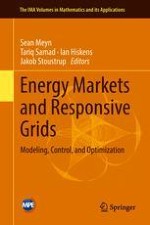This volume consists of selected essays by participants of the workshop Control at Large Scales: Energy Markets and Responsive Grids held at the Institute for Mathematics and its Applications, Minneapolis, Minnesota, U.S.A. from May 9-13, 2016. The workshop brought together a diverse group of experts to discuss current and future challenges in energy markets and controls, along with potential solutions.
The volume includes chapters on significant challenges in the design of markets and incentives, integration of renewable energy and energy storage, risk management and resilience, and distributed and multi-scale optimization and control. Contributors include leading experts from academia and industry in power systems and markets as well as control science and engineering.
This volume will be of use to experts and newcomers interested in all aspects of the challenges facing the creation of a more sustainable electricity infrastructure, in areas such as distributed and stochastic optimization and control, stability theory, economics, policy, and financial mathematics, as well as in all aspects of power system operation.
